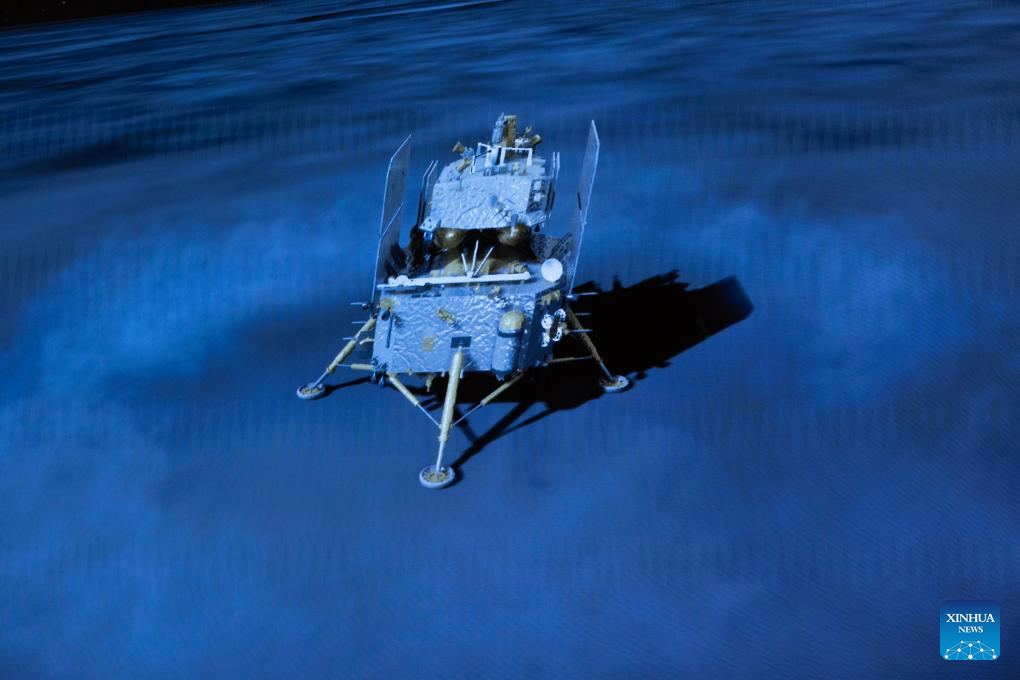
BEIJING: China’s Chang’e 6 robotic mission reached a crucial moment in the nation’s historic lunar odyssey on Sunday morning, when its landing craft successfully touched down on the moon’s little-known far side.
With assistance from the Queqiao 2 relay satellite, the Chang’e 6 landing craft softly settled on the lunar surface at 6:23 am at a designated site inside the South Pole-Aitken Basin, the moon’s largest, oldest and deepest basin.
The landing marked the arrival of China’s, and the world’s, second-ever spacecraft on the moon’s far side, which scientists believe holds clues to many mysteries surrounding the moon as well as the solar system.
In the next two days, the craft is set to use a robotic arm and a drill to collect surface and underground substances and place them in a container that will be sealed before the materials are sent into lunar orbit for the journey to Earth.
If the mission goes according to plan, it will be the first time that dust and rocks from the lunar far side have been retrieved. The new samples will probably offer researchers around the globe useful keys for answering questions about the moon, and will likely bring a range of invaluable scientific payoffs.
According to the China National Space Administration, Chang’e 6’s complex landing operation began on Thursday, when the landing craft separated from the combined orbiter and reentry capsule in preparation for the landing.
When everything was ready on Sunday morning, the landing craft began its descent at 6:09 am.
The craft continued making adjustments during the descent as its main engine worked to reduce the flying speed. Its special cameras took pictures of the selected destination and transmitted them to computers to determine the final landing point and also to identify possible hazards on the surface, such as large rocks, so that the craft could maneuver to avoid them.
When reaching an altitude of about 100 meters above the moon, the landing vessel suspended its descent and hovered for a short time to carry out accurate laser scanning of obstacles before continuing to descend at a slower and steady speed.
At the last moment of the challenging operation, when the craft was several meters above the surface, its main engine was stopped, and the craft activated a buffer system and touched down smoothly on the lunar surface. It thus became the second spacecraft to arrive on the lunar far side after Chang’e 4, which achieved the feat five-and-a-half years ago.
Soon after the landing, the craft’s solar panels and directional antennas unfolded and went through initial checks and setup, and then the collection devices began to gather samples.
Meanwhile, two European scientific apparatus carried by the Chang’e 6 landing craft — a radon-measuring instrument from France’s national space agency and a dedicated negative ion instrument developed by the Swedish Institute of Space Physics with support from the European Space Agency — have begun to operate on the lunar surface, according to the Chinese space administration. –The Daily Mail-China Daily news exchange item





